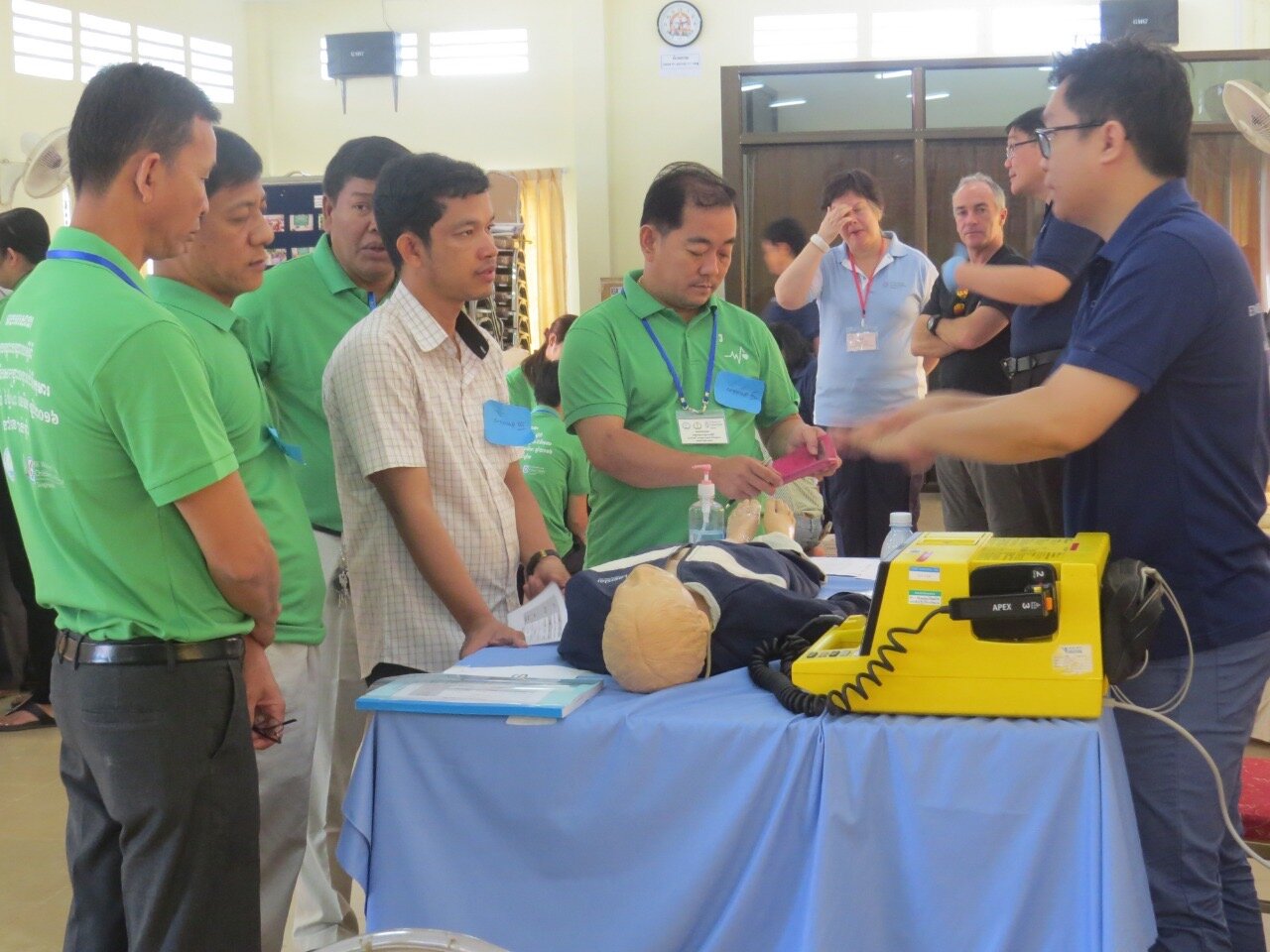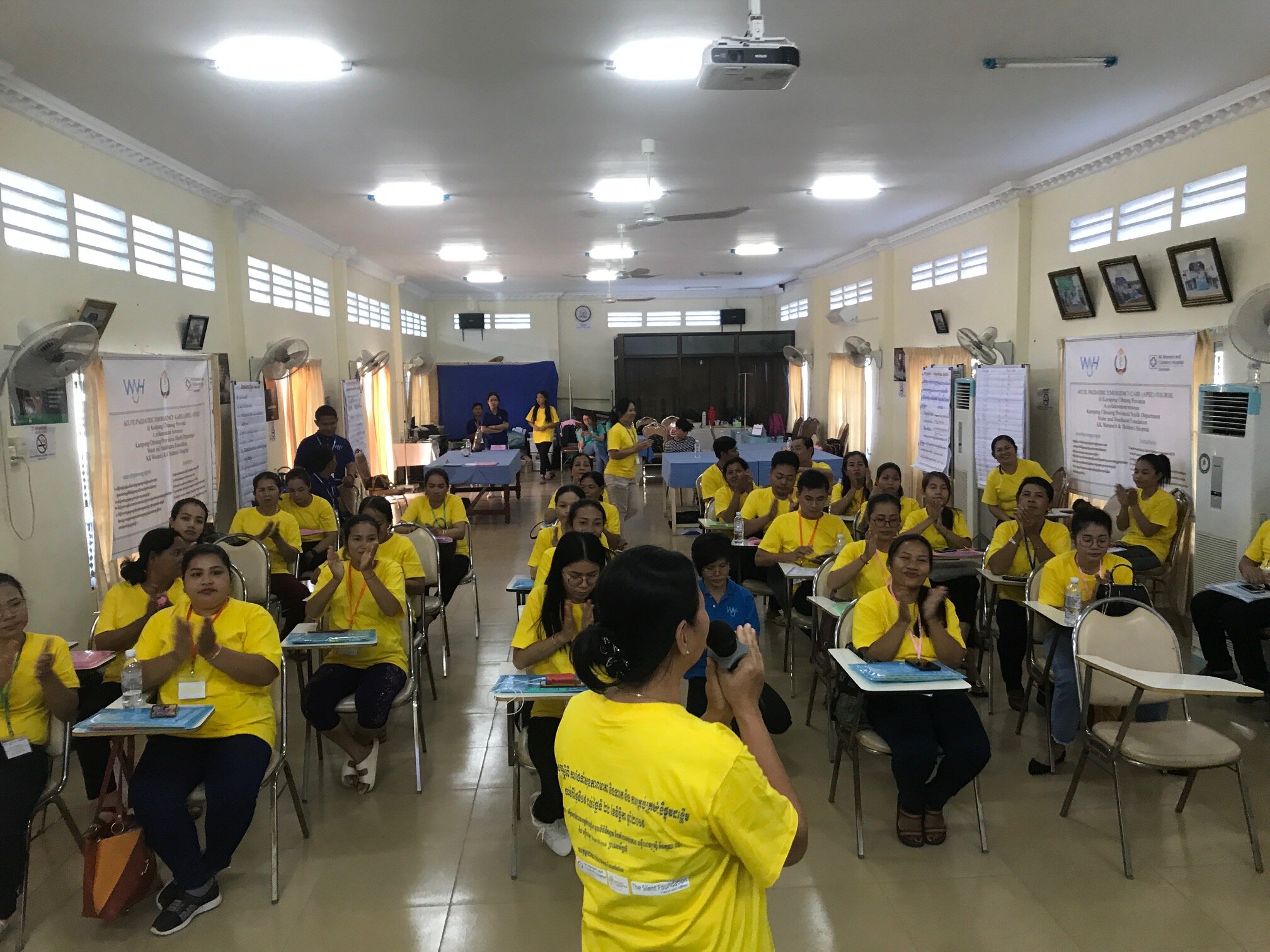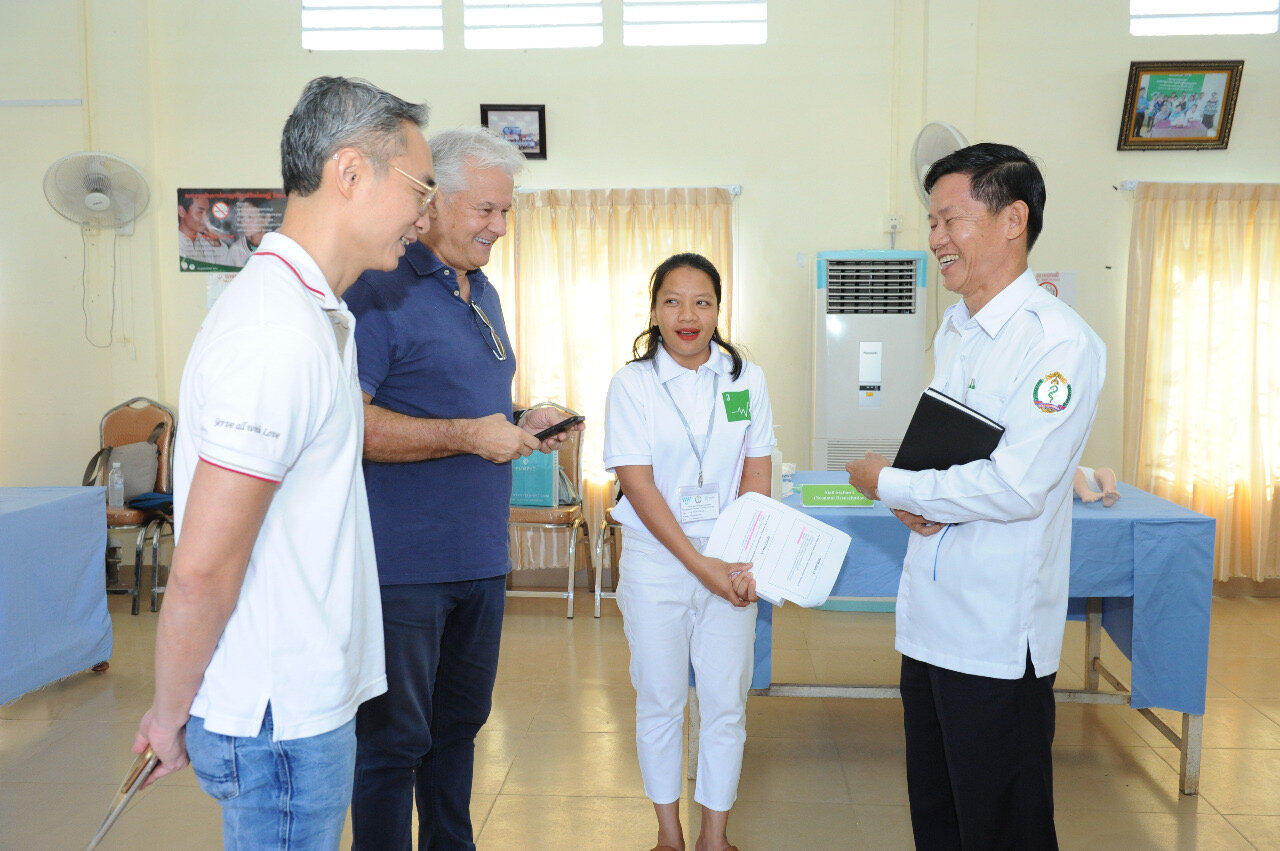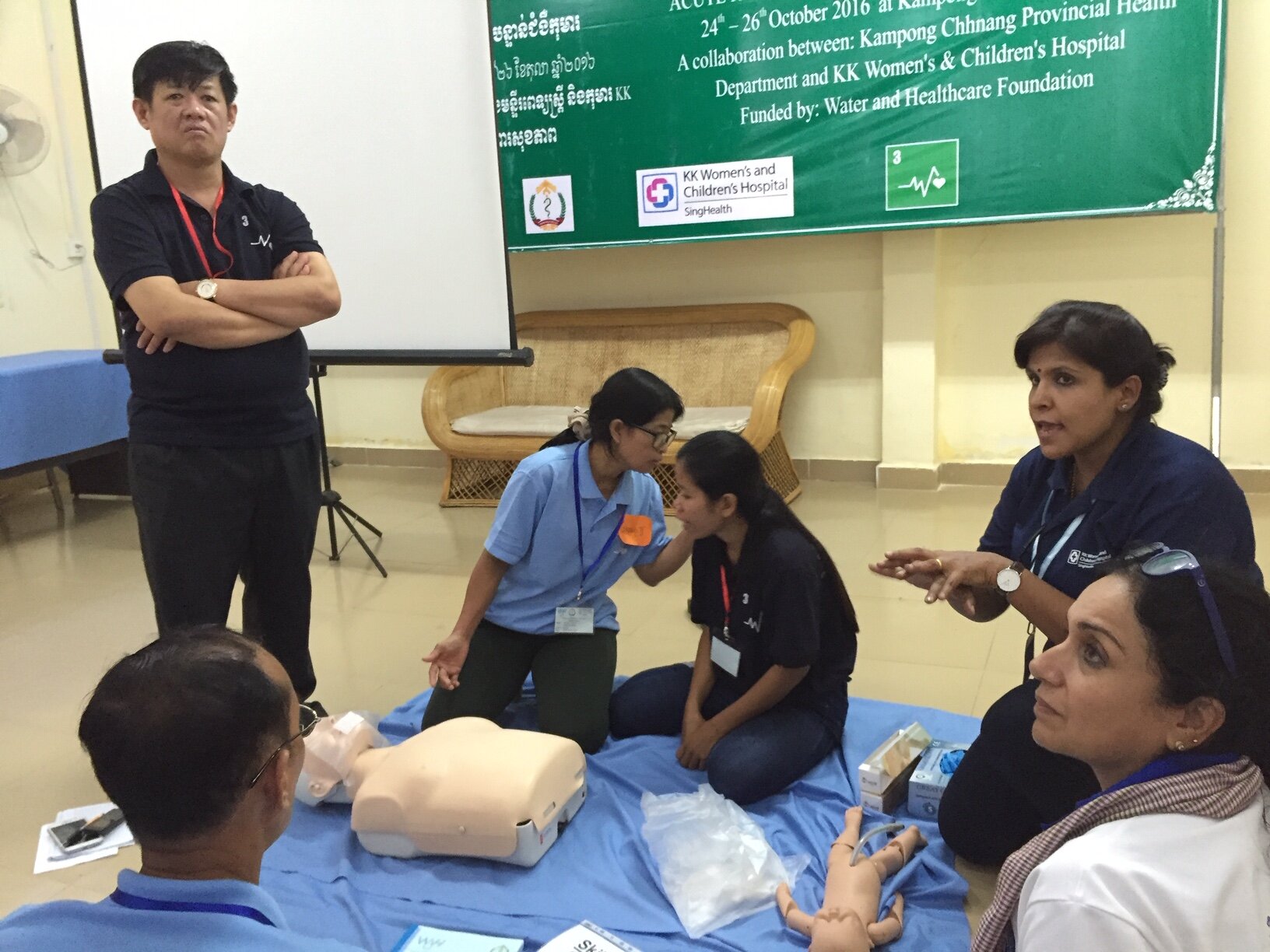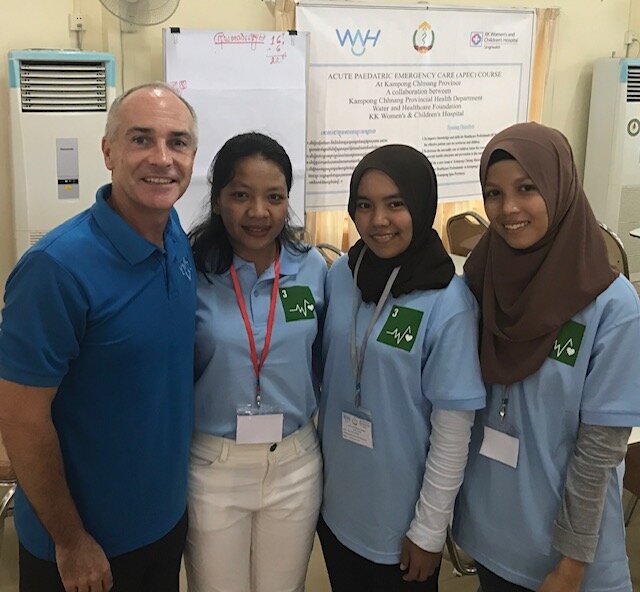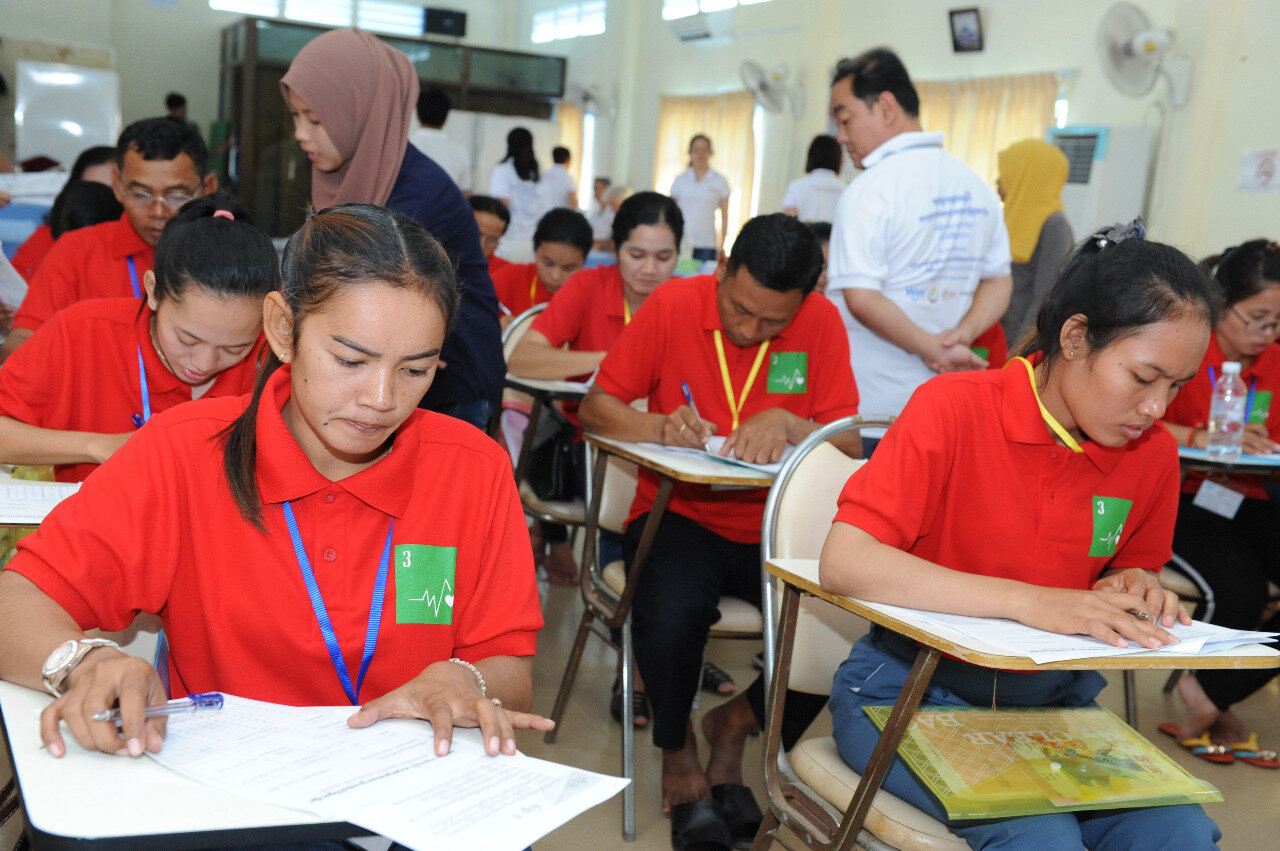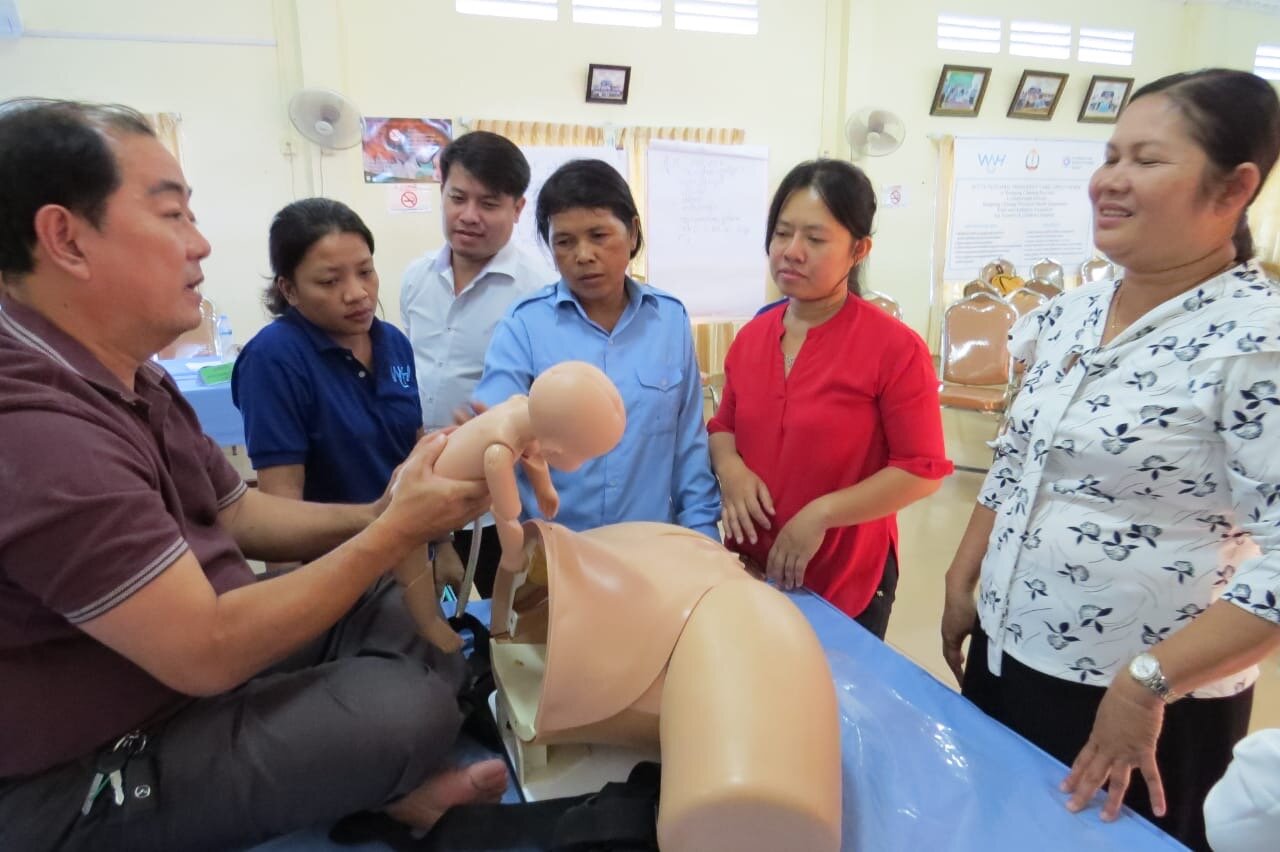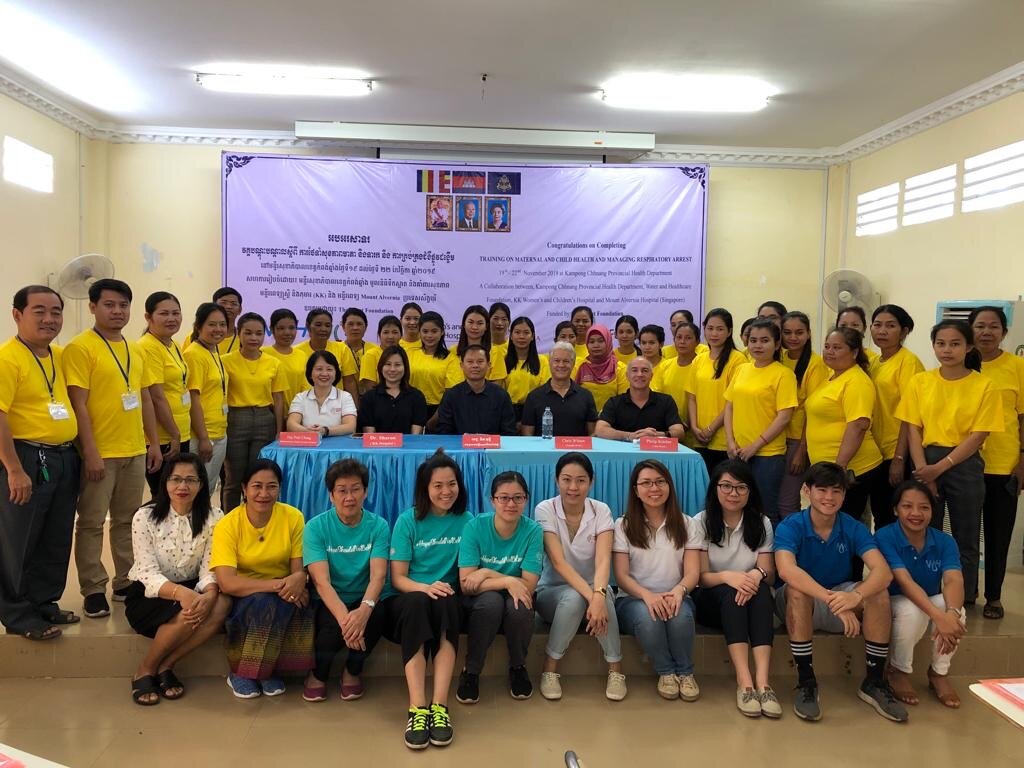Difference between Pediatric and Midwife Emergency Training
Since 2013, when we learned about the problems faced in Kampong Chnnang, we have worked with KKH and Mt Alvernia and have successfully decreased the mortality rate in mothers by around 90%.
With KKH Women’s and Children Hospital, Singapore, and the Provincial Health Department (PHDKC) in Kampong Chnnang, we were able to identify the major causes of death amongst the children and mothers, and take action through running the bi-annual emergency medical training programs.
Midwife Emergency Training (Complications associated to the motheR)
From 2010 KKH visited 3-4 times to ascertain the problems faced by pregnant mothers and why so many mothers were not surviving childbirth. KKH found that there were three reasons, PPH, eclampsia and lack of good hygiene. As a result KKH started an emergency midwife program and we have trained around 300 midwives and nurses over 7 years.
Pediatric Emergency Training (Complications associated to the baby, once born)
In 2015 KKH recommended running emergency programs for paediatric doctors and nurses to try and drop the incidence of deaths in children. Topics included respiratory issues and general well being of children and their mothers.
As the nurses and the doctors were trained and prepared for emergencies, we Introduced Emergency Medical Kits, found in all hospitals and Health centres.
KKH identified the need to train nurses, doctors and midwives using medical kits/boxes, specially designed to carry all the medicines and equipment needed for each medical problem, eg eclampsia, PPH. The training used these boxes and equipment, paid for by WAH. Each health centre and hospital and health centre now has boxes for use in an emergency, and these boxes are being used daily. Replenishment is carried out by KCPHD and WAH together, to make sure they are always full and not missing any equipment or medicine.

